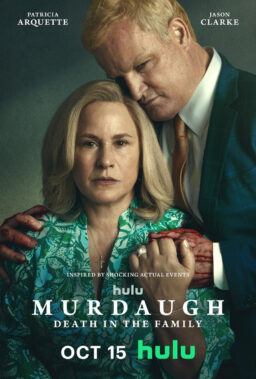This year’s Fantasia kicked off with an extreme, but touching image—a polar bear and a young girl, Viva Lee’s Sumi writhing on the snow together in the frame. That wild, harmonious feeling of humans and nature informs Kirsten Carthew’s ambitious film “Polaris,” which is like a “Waterworld” or “Mad Max” but set in the Canadian Yukon. “Polaris” goes even further than those movies, however, by making its few characters speak an unfamiliar language that comes without subtitles.
Set in 2144, after a freeze nearly killed everyone on earth, “Polaris” follows Sumi as she moves away from her life with the polar bear that raised her. In this dystopia, it is all women who survived, and some of them are more brutal and tyrannical than others, as indicated by their intimidating steel uniforms or by the violence they unleash on each other. It’s striking how much the gore in this survival movie does not hold back, establishing a haunting sense of danger and mistrust. It’s all the more effectively touching when Sumi finds someone she can be around, as with an old woman and a harmonica, the musical instrument becoming a bridge for peace.
“Polaris” is the kind of film in which the ambition of the project can drive the curiosity of the narrative more than the plot. “Polaris” can sometimes seem too flat and straightforward as Sumi goes from one doomed interaction to the next. The project doesn’t exactly crack how to make this world expressive without using language that can feel one-note. Its world-building also receives some punched holes anytime its production design would make more sense for 2044 instead of 2144, with cars and pieces of clothing in particular.
Nonetheless, Carthew is committed to her bold vision about human nature, and it can be cozy to see an independent project take on such a massive scale work with such focus, the latter idea felt in its performances. The Canadian Yukon backdrop is shown here to be unforgiving or warming, all depending on who is sharing the screen with Lee’s impressive, roaring performance.

Grandpa and grandma are not alright in “The Elderly,” a droning horror film that had its world premiere at Fantasia this past Saturday. It begins with immense visual promise, and a move that A24 horror tales have made all too familiar recently—Grandma stands on her balcony. Seconds later she is face-down in a puddle of blood on the ground, the camera floating over her, creating a disturbing sense of why she did it, but also a comforting sense that co-directors Raúl Cerezo and Fernando González Gómez know what they’re doing with visual storytelling.
“The Elderly” then more or less becomes about what to do with Grandpa as he experiences dementia. He is largely silent, his bulking, sorrowful presence captured in intimidating close-ups. His son (Gustavo Salermón) does not want to put him in a home, but Grandpa is acting weirder and weirder, and one night tells his son that he’s going to kill him. Meanwhile, his daughter Naia (Paula Gallego) is having visions of Grandma, with the threat that she will reappear. There are also other strange-acting elderly folk in this world, like the guy across the street who bites Naia’s boyfriend Jota (Juan Acedo) in the head.
It’s frustrating how “The Elderly” becomes so imbalanced—its visual compositions are so striking throughout, but its plotting trades the ominous for the obvious. I loved a recurring establishing shot that echoed Grandma’s sudden fall, with the camera looking up at the sky and then slamming down to the ground of a certain location, creating a feeling of that lingering tragedy. They use the camera with a great, illustrative emotional focus. But their overwrought, boringly typical usage of sound—both from whining orchestral strings and overzealous jump scare bangs, extra loud when it premiered at Fantasia—betrays that confidence.
The story itself falls apart right as everything should be taking off; the emotional stakes are clear about the son not wanting to put the father in the home despite dad’s strange behavior and the weird things he finds written on the walls of dad’s apartment, but are not felt from such repetitive storytelling. “The Elderly” then drags and drags until it reaches a conclusion, or an answer, that should be disturbing but amounts to a shoulder shrug.

Alex Phillips’ “All Jacked Up and Full of Worms” succeeds in being one of the most polarizing movies you could find at any festival, having been designed like a drug trip through and through. Everyone has their own experience with hallucinogens—the movie echoes that with a gnarly ensemble comedy where worms are the word. Grimy characters snort and eat worms, more to inspire freewheeling sequences that do circles around concepts of love, parenting, pregnancy, violence, etc., without it having to mean much of anything.
I was sometimes jostled, sometimes amused, and sometimes drained by this dirty story that tends to get a little too cute, especially when it goes for broad comedy beats (slow-motion walking after a drug experience, straight out of Apatow-era stuff). But every actor here tries to sell what this movie is goofing on, whether it’s the wannabe father who has a baby doll with a disturbing facial feature, the two people in clown make-up who are introduced having sex on a garbage can, or the sex worker woman who introduces the worms to a knowingly gibberish course of events. The characters prove to be more memorable than the random absurd things they blurt out, seemingly for random’s sake.
The performances here are uniformly sound in creating Phillips’ world, like a slew of funny and strange people you know you’d want to see again, maybe in part because you’ve seen them in this movie. And yet this film’s largest power comes down to the worms. Whenever “All Jacked Up” feels like the characters are actually eating or snorting the worms, the project itself becomes wild and distinct, and gets close to the gnarly texture it wants from image and performance; when it looks fake, which it does more than half the time, “All Jacked Up and Full of Worms” can play like a small inside joke stretched out to feature length.












